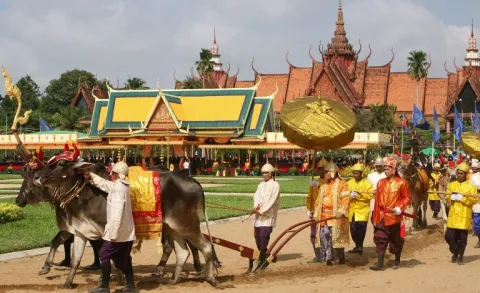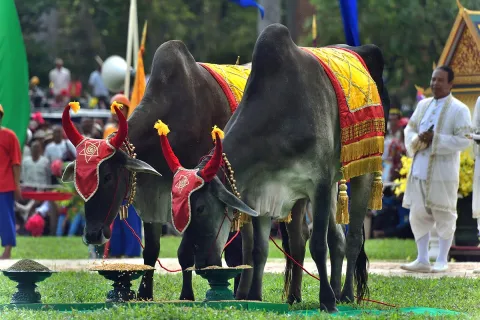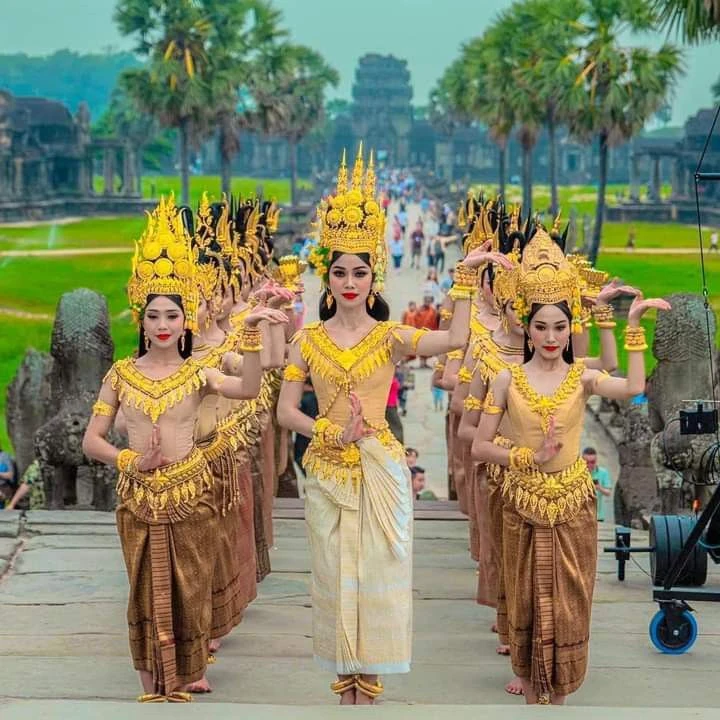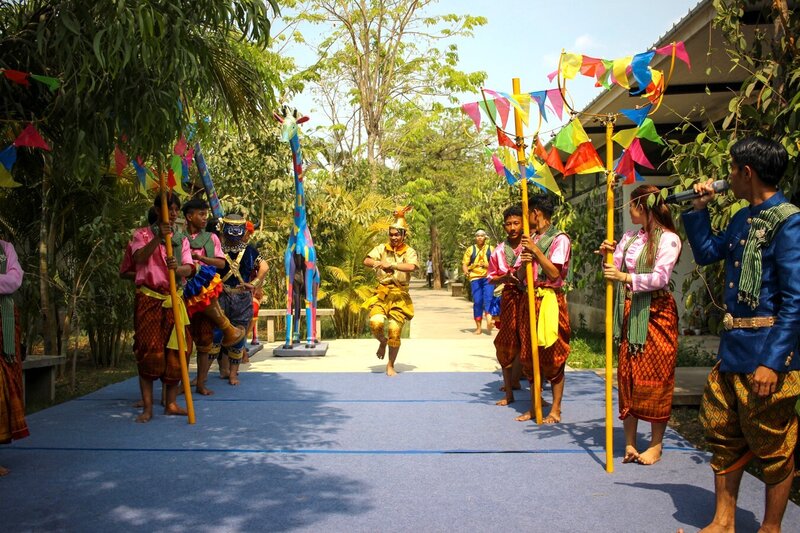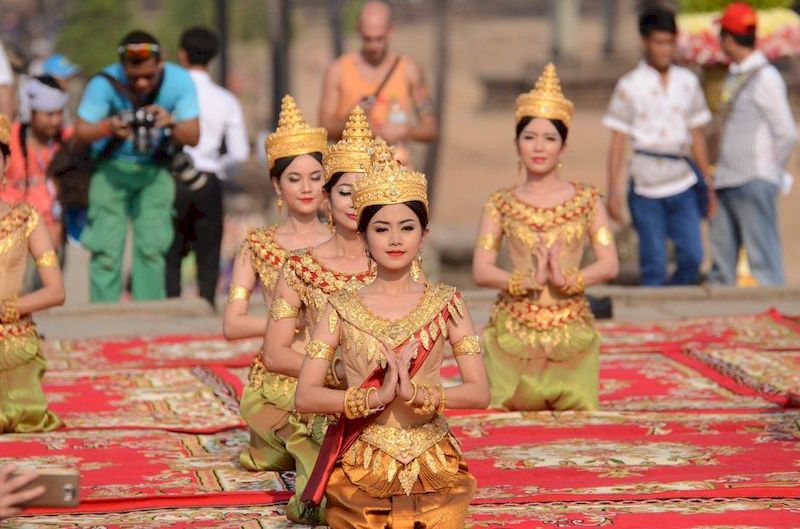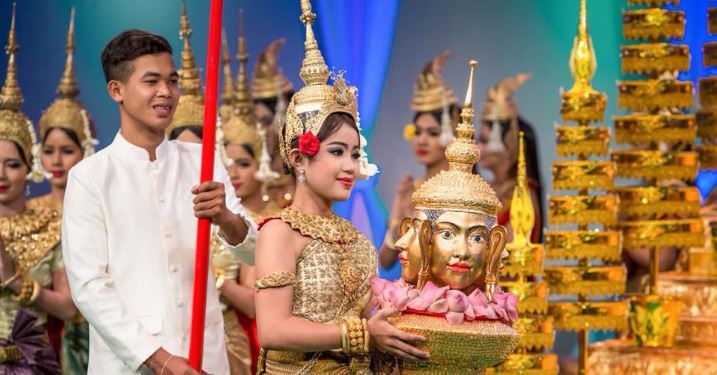ការពិពណ៌នា
ព្រះរាជាណាចក្រកម្ពុជា
ពិធីបុណ្យឆ្នាំថ្មីខ្មែរ គឺជាពិធីបុណ្យបុរាណ ដែលរៀបចំឡើងក្នុងគោលបំណងនៃការជួបជុំ ជាប្រពៃណីរបស់ប្រជាជនខ្មែរ តាំងពីមុនកាល។ ឆ្នាំរៀបចំកាលពីថ្ងៃទី២ កុម្ភៈ ឆ្នាំ២០១៧ ឬថ្ងៃទី១ ខែកក្កដា ឆ្នាំ២០១៨ ឬថ្ងៃទី១១ ខែសីហា ឆ្នាំ២០១៨ នៅម៉ោង ១១:០០ ព្រឹក ប្រជាជនខ្មែរសាកលវិទ្យាល័យដំណើរការនៅថ្ងៃណាមួយនៅចុងក្រោយដើម្បីឲ្យគ្រួសាររបស់ពួកគេចាំបាច់រៀបចំផ្ទះនិងទទួលយកព្រះស្រឡាញ់ឆ្នាំថ្មី។
ការបើកថ្ងៃឆ្នាំថ្មីបានក្លាយជាប្រពៃណីតាមរយៈរឿងព្រេង។ មានមនុស្សដែលមានទ្រព្យសម្បត្តិម្នាក់មិនគ្រប់គ្រាន់មានកូនប្រុសម្នាក់ឈ្មួញឈ្មោះ ដាមប៉ាល កូមា ដែលជាកូនឪពុករបស់ព្រះរាជាណាចក្រអិនឌ្រនៅសម័យ ដែលមានចំណេះដឹងមហabo និងបានដឹងភាសារបស់ភាគីមិនសូវជាខ្លាំង។ នៅមួយថ្ងៃ ដាមប៉ាល កូមាត្រូវបានទាមទារឱ្យដោះស្រាយភាគី ៣ ប្រកបដោយមហាថ្លើន្តគឺសព្វថ្ងៃហា ជាព្រះមហាសង្ហាខាខេស។ បើកនាងឈ្មោះ សេ្តរ្យទេស។ ប្រសិនបើដាមប៉ាល កូមាចេះដោះស្រាយវា ទាំង ៣ គឺនាងធានាត្រូវការសម្រាករក្សាថាមួយ វាជាសេ្តរ្យទេល។ ការចុះល្បើងនៅកន្លែងមុខភាគី។
ថ្ងៃទី ១ ដើម្បីបើកឆ្នាំថ្មី (ថ្ងៃ១នៃពិធីបុណ្យឆ្នាំថ្មីខ្មែរ)
ថ្ងៃដំបូងនៃពិធីបុណ្យឆ្នាំថ្មីខ្មែរ ត្រូវបានហៅថាមហាសង្គ្រាម ហើយមហាសង្គ្រាមត្រូវបានចូលរួមក្នុងថ្ងៃផ្សេងគ្នា។ រៀបចំដោយទ្រព្យសម្បត្តិនៃព្រះសមុទ្រ។
១. ប្រសិនបើសង្គ្រាមធ្លាក់នៅថ្ងៃអាទិត្យ នាពេលនោះជាការដំណើរការដោយព្រះតូសាសា។
២. ប្រសិនបើសង្គ្រាមធ្លាក់នៅថ្ងៃច័ន្ទ នាពេលនោះជាការដំណើរការដោយព្រះករ៉ាក់សាដែលី។
៣. ប្រសិនបើសង្គ្រាមធ្លាក់នៅថ្ងៃអង្គារ នាពេលនោះជាការដំនើរការដោយព្រះរាជាដានាក់ផុសារ។
៤. ប្រសិនបើសង្គ្រាមធ្លាក់នៅថ្ងៃពុធនាក់ងាយដូចដានឌែ។
៥. ប្រសិនបើសង្គ្រាមធ្លាក់នៅថ្ងៃព្រហស្បតិ៍ នាពេលនោះជាការដំណើរការដោយព្រះកីរីនី។
៦. ប្រសិនបើសង្គ្រាមធ្លាក់នៅថ្ងៃសុក្រ នាពេលនោះជាការដំណើរការដោយព្រះកិមីរា។
៧. ប្រសិនបើសង្គ្រាមធ្លាក់នៅថ្ងៃសៅរ៍ នាពេលនោះជាការដំណើរការដោយព្រះមហោត្រា។
នៅថ្ងៃនេះ កម្ពុជាហាក់រៀបចំការផ្តល់ជូនទៅវត្តឲ្យអំឡុងពេលម៉ុនឬជួយលោកអ្នកគ្រួសារទៅនិងធ្វើការប្រារព្ធថានៅ។
ថ្ងៃបួសនៅកន្លែងព្រះពុទ្ធ
នៅថ្ងៃនេះ បងប្អូនកម្ពុជា តែងតែយកអំណោយទៅកន្លែងព្រះពុទ្ធ ដើម្បីជ្រះឲ្យអ្នកគ្រូ ក្រុមគ្រួសារនិងសុំសិរីសួស្តីនិងសុំពរជ័យសុខភាពល្អ។
From $75.00
per adultAdult x 3
10:30 AM
Free cancellation. Cancel anytime before 3 days for full refund.
